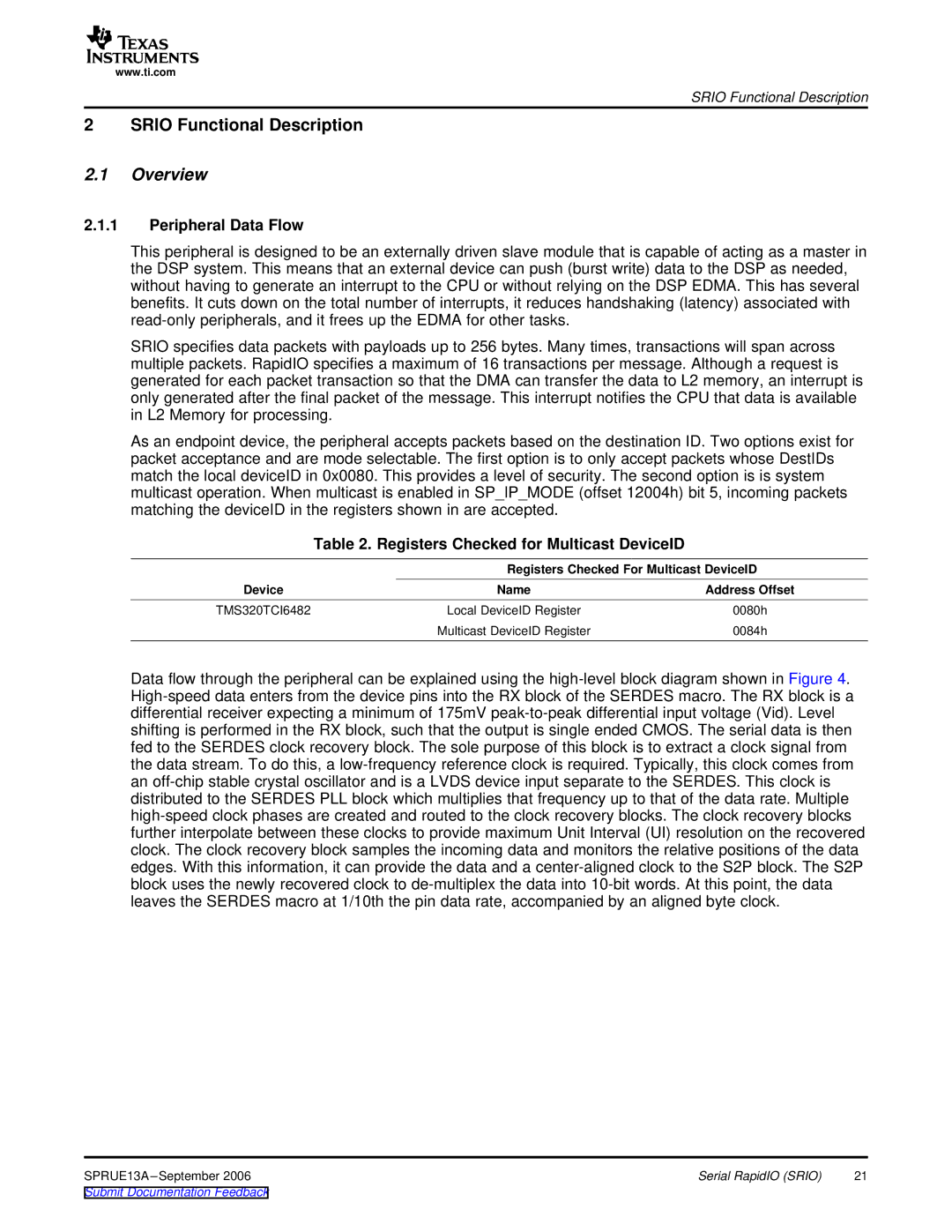
www.ti.com
SRIO Functional Description
2 SRIO Functional Description
2.1Overview
2.1.1Peripheral Data Flow
This peripheral is designed to be an externally driven slave module that is capable of acting as a master in the DSP system. This means that an external device can push (burst write) data to the DSP as needed, without having to generate an interrupt to the CPU or without relying on the DSP EDMA. This has several benefits. It cuts down on the total number of interrupts, it reduces handshaking (latency) associated with
SRIO specifies data packets with payloads up to 256 bytes. Many times, transactions will span across multiple packets. RapidIO specifies a maximum of 16 transactions per message. Although a request is generated for each packet transaction so that the DMA can transfer the data to L2 memory, an interrupt is only generated after the final packet of the message. This interrupt notifies the CPU that data is available in L2 Memory for processing.
As an endpoint device, the peripheral accepts packets based on the destination ID. Two options exist for packet acceptance and are mode selectable. The first option is to only accept packets whose DestIDs match the local deviceID in 0x0080. This provides a level of security. The second option is is system multicast operation. When multicast is enabled in SP_IP_MODE (offset 12004h) bit 5, incoming packets matching the deviceID in the registers shown in are accepted.
Table 2. Registers Checked for Multicast DeviceID
| Registers Checked For Multicast DeviceID | |
Device | Name | Address Offset |
TMS320TCI6482 | Local DeviceID Register | 0080h |
| Multicast DeviceID Register | 0084h |
Data flow through the peripheral can be explained using the
SPRUE13A | Serial RapidIO (SRIO) | 21 |
